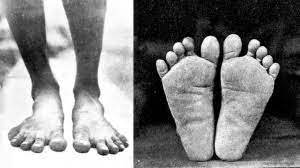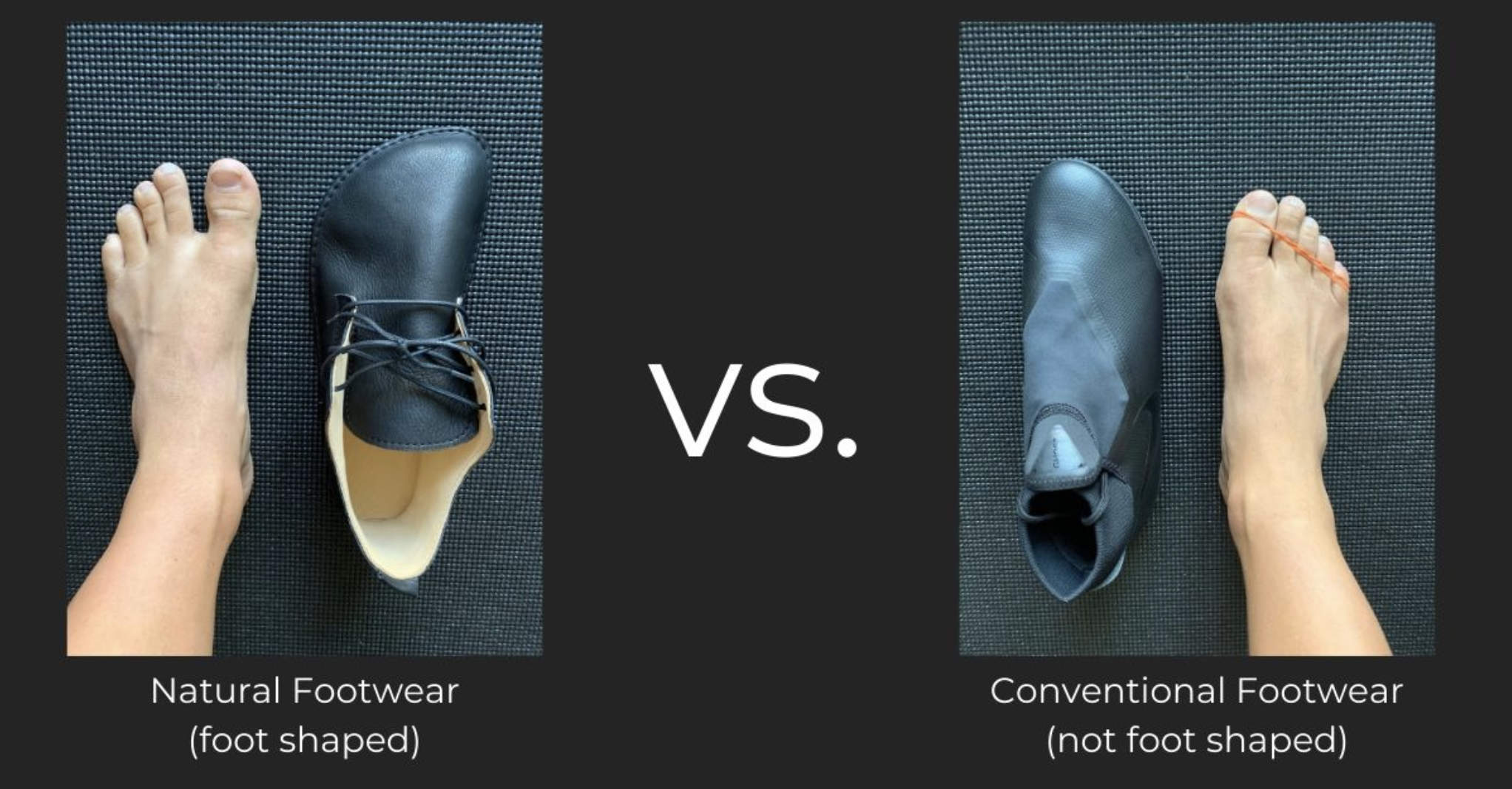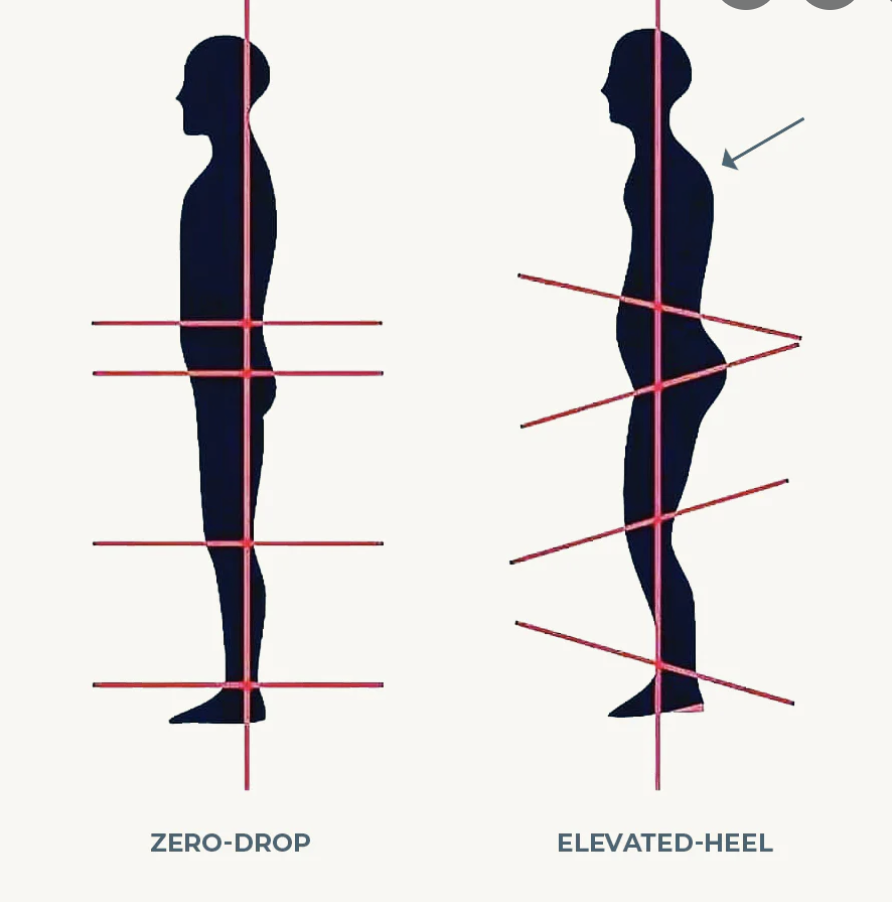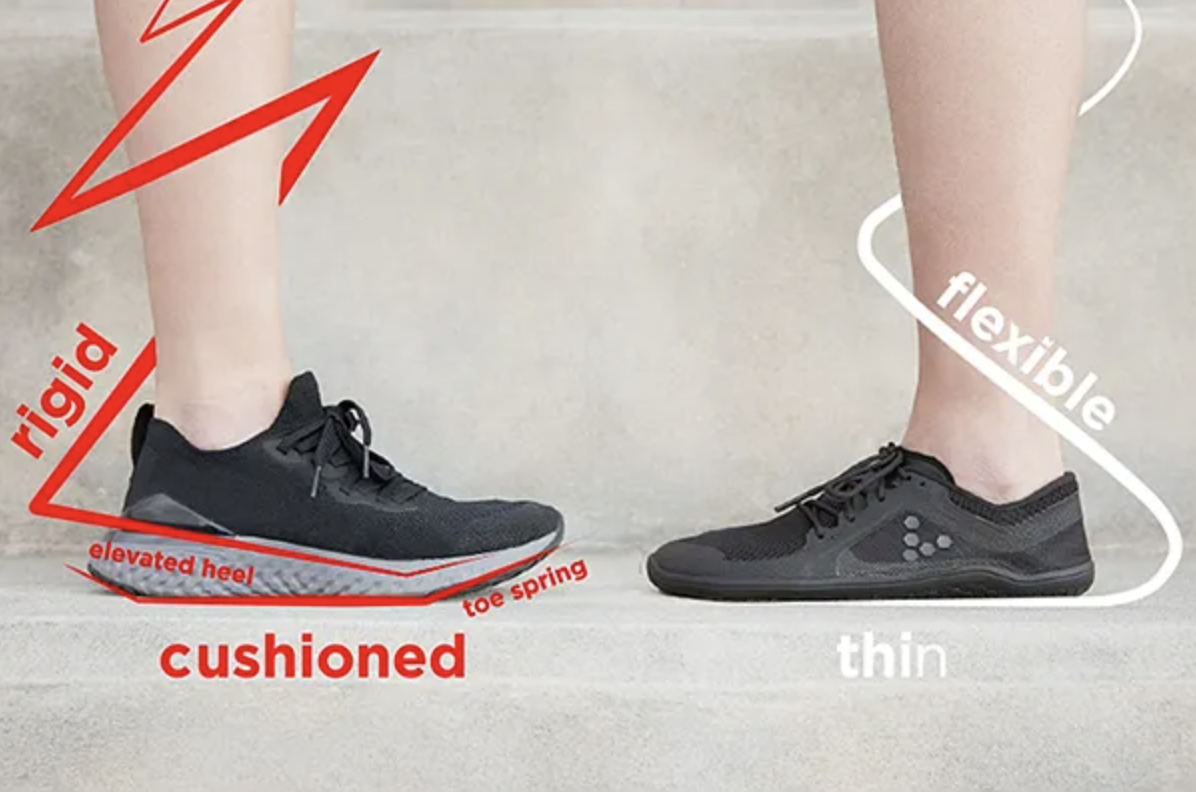Benefits of Barefoot Shoes on Foot Health
Do you suffer from ankle, knee, hip or back pain? Did you know these issues can arise from poor foot health?
Yep, it's true! This is why barefoot shoes have become increasingly popular among those who have discovered their many benefits.
The human foot is truly an evolutionary masterpiece. The natural foot is wide with fan shaped toes, flexible and adaptable with three dynamic arches, and innervated with thousands of nerve endings for maximum sensory feedback for motor control.
If you think about it, bare feet have carried humans through life without additional support ever since we became bipedal millions of years ago. However, only until recently has modern society accepted that constant foot support in the form of orthotics and restrictive shoes is normal... and at the same time rates of low back pain have skyrocketed, and is now the most common musculoskeletal problem globally.
Is there a connection between poor foot health and back pain (as well as other orthopedic issues)? Research says yes!
The way we’ve been dealing with foot pain (and other orthopedic pain) hasn’t been working. Stiff supportive shoes and elective corrective surgeries are not giving people the relief they want or need. Too many times I have witnessed patients go in for a “corrective” surgery only to come out worse and more painful than before. So, a different approach to dealing with foot pain is exactly what our society needs, and barefoot shoes are one of the ways we can help ourselves avoid unnecessary pain and costly elective surgeries.
Here are some of the ways you can benefit from barefoot shoes:
Improves Forefoot Width and Toe Alignment
Feet are supposed to be wide with fan-shaped toes. Shoes that allow for the natural curves of the foot help them maintain this shape. More importantly, it grants them the opportunity to function optimally. Modern shoes are narrow and compress our toes together, and our feet take the shape of the shoes they are in. If you spend the majority of your time in squished pointy shoes then your feet are going to start looking the same way. This eventually leads to bunions and other deformities of the feet and toes.
Team, T. F. C. (2020, April 22). Foot health 101. The Foot Collective. Retrieved June 23, 2022, from https://www.thefootcollective.com/barefoot/
Strengthens Intrinsic Foot Muscles and Increases Arch Height
Flat feet are weak feet and can cause a lot of problems in your body. The arch of the foot can be compared to a bridge. The two ends of this bridge are the heel and the ball of the foot. The muscles on the plantar aspect of the foot connect the bridge together and help keep the ends from separating when force is put through the foot. However, sticking your foot in a shoe with large supportive arches completely takes away the opportunity for the muscles of the foot to work and strengthen. Supportive shoes also place the foot into one single position, when in actuality the arches should be dynamically moving (flattening and arching) with each step. Weaning off arch support can take some time to get used to, but in the end it’s much better for your long-term health of your foot.
Ioannou, C. (2021, January 21). Blog: Exercising health. Exercising Health. Retrieved June 23, 2022, from https://www.exercisinghealth.net/blog/how-to-fix-flat-feet
Promotes Proper Joint Alignment and Posture
A zero drop shoe keeps the center of gravity over the heels, where we are most stable. Shoes with elevated heels push our center of gravity forward and cause compensations throughout the entire body to stay balanced. Even minimally elevated heels like on tennis shoes cause the compensations, not just high heels. This can cause some parts of the body to be overworked and others to be under worked, which can cause imbalances in muscle strength and joint mobility. Zero drop shoes are essential to whole body alignment.
Restores and Improves Joint Mobility
Feet are meant to be flexible, which means our shoes should be too. Stiff shoes cause the intricate muscles of the foot to become tight and inflexible. Shoes that allow for movement of the foot can help those muscles to stay strong and agile which can help improve your stability. If your shoes do not allow for optimal range of motion, then the result is poor mobility leading to weak feet causing pain.
Learn About Barefoot | Barefoot Science | Vivobarefoot UK. (2022). Https://Www.Vivobarefoot.Com/Uk/Science.
Improves Motor Control Based on Increased Sensory Feedback
Shoes with thick, stiff soles block our ability to feel the ground directly beneath us, inhibiting sensory feedback. This limited sensory feedback has been proven to reduce our movement efficiency and restrict motor control. The ability to balance is incredibly important for human locomotion and proper gait dynamics, and the sensory connection to our feet play a key part in it. Thin soles allow for improved connection with the ground, in turn improving our ability to move confidently. Thick soles prevent your nerves from sensing where you are in space, hindering our ability to react to our environment leading to poor movement.
Are you struggling with orthopedic issues and are concerned these problems are arising from your feet? Schedule a FREE phone consultation with one of our Doctors of Physical Therapy to get the answers you need to start living a pain-free lifestyle again!
References:
Speck, J. (2019, June 22). Foot Muscle Weakness and Flat Feet. Fix Flat Feet. https://www.fixflatfeet.com/foot-muscle-weakness/
Learn About Barefoot | Barefoot Science | Vivobarefoot UK. (2022). Https://Www.Vivobarefoot.Com/Uk/Science.
Minimalist Shoes Can Help Improve Posture and Musculoskeletal Health. (2021, March 24). Lems Shoes. https://www.lemsshoes.com/blogs/news/minimalist-shoes-can-help-improve-posture-and-musculoskeletal-health
Eils E, Nolte S, Tewes M, Thorwesten L, Völker K, Rosenbaum D. Modified pressure distribution patterns in walking following reduction of plantar sensation. J Biomech. 2002 Oct;35(10):1307-13. doi: 10.1016/s0021-9290(02)00168-9. PMID: 12231276.
McKeon PO, Hertel J, Bramble D, Davis I. The foot core system: a new paradigm for understanding intrinsic foot muscle function. Br J Sports Med. 2015 Mar;49(5):290. doi: 10.1136/bjsports-2013-092690. Epub 2014 Mar 21. PMID: 24659509.
Wolf S, Simon J, Patikas D, Schuster W, Armbrust P, Döderlein L. Foot motion in children shoes: a comparison of barefoot walking with shod walking in conventional and flexible shoes. Gait Posture. 2008 Jan;27(1):51-9. doi: 10.1016/j.gaitpost.2007.01.005. Epub 2007 Mar 13. PMID: 17353125.






